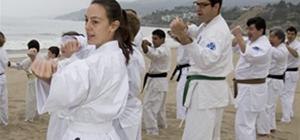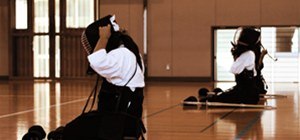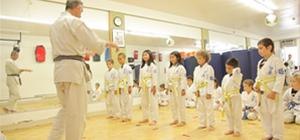"Simplicity is the ultimate sophistication." -Leonardo da Vinci
Learning a kata requires that you go through several stages. First you have to learn the basic pattern and the techniques. Then you have to perfect what you've learned. Then you have to deconstruct what you've learned and perfected in order to truly understand what the kata is teaching you vis a vis close quarter engagement.
Mastering Stage 1 and Stage 2 kata is challenging enough on its own without adding the ingredient of introspection that comes with Stage 3 kata. Many people prefer to remain in Stages 1 and 2 because, for one reason or another, the introspection of Stage 3 doesn't appeal to them. There's nothing wrong with staying in Stage 1 or 2. As they say in Italian, Chi sta bene, non si muove. "If you're happy where you are, don't move."
For those of you who're interested in entering Stage 3 of your kata practice, it's best to keep in mind the quote from Leonardo at the start of this article. Faced with a multitude of techniques in any kata, and baffling limb placements, it might seem an impossible task to understand what is actually being taught by the kata. When confronted with this reality, try to keep things simple.
1. Most techniques in kata were originally intended to occur at very close range. As karate evolved into a club and sport activity, techniques were exaggerated to make them more pleasing to the eye of the spectator/judge. The importance of this for your understanding of the kata is that elbows and knees are often the weapons of choice as opposed to hands and feet. Hands are generally used to check or trap your opponent¹s strikes while you position yourself to deliver the "money shot."
2. The pattern, or embusen, of a kata may give the impression that techniques flow in a specific direction, one after the other, like traffic. This isn't necessarily so. Although the pattern may be telling you that the next technique is delivered after you turn 180 degrees toward your opponent, challenge this notion instead. Think of what makes sense if your goal is to deliver force accurately and quickly to a target. While choreography looks good in the movies, simplicity is the preferred option in close quarter engagements.
3. Each kata has several themes within it, like a piece of music. Search for these little "melodic signatures". They are very brief, so expect them to arise and recede quickly.
4. When seeking a bunkai or explanation, choose the one that involves making the fewest assumptions about your opponent's behavior. William of Occam, a scientist/philosopher who lived in 13th Century England, actually made this a rule of good science. "Eliminate all that is unnecessary in order for the hypothesis to remain predictive" is a statement known within Science today as Occam's Razor. Use the razor.
Assume as little as possible and keep your bunkai simple and brief. Doing so, you honor the spirit of the kata's originator while abiding by the well-known Japanese spirit of simple sophistication, wabi-sabi, and the artistry of Leonardo. See you in the dojo!
Gambatte kudasai. Osu!
Just updated your iPhone? You'll find new emoji, enhanced security, podcast transcripts, Apple Cash virtual numbers, and other useful features. There are even new additions hidden within Safari. Find out what's new and changed on your iPhone with the iOS 17.4 update.




























Be the First to Comment
Share Your Thoughts